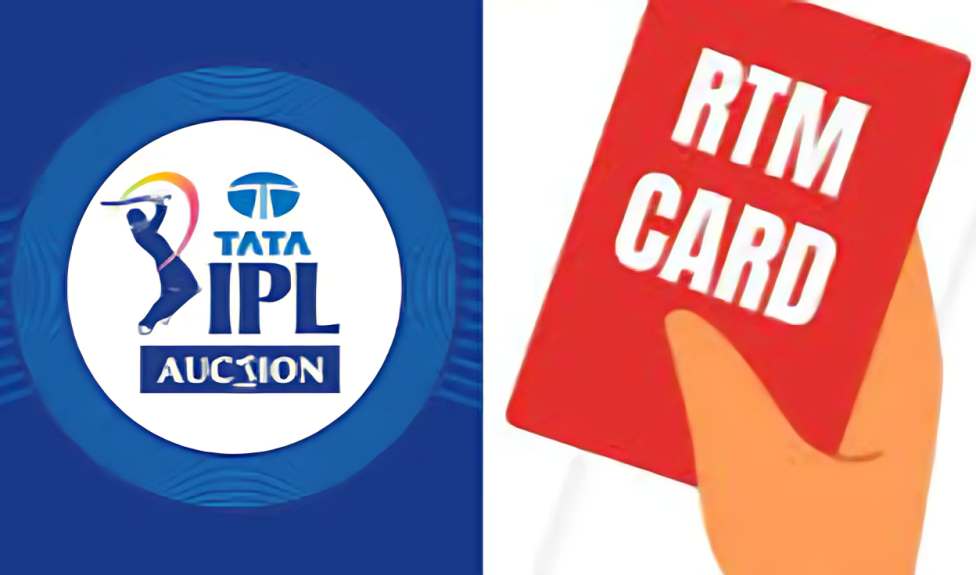The IPL retention rules shape team strategies, allowing franchises to retain core players while balancing budgets. Key highlights include limits on player retention, the impact on auction dynamics, salary caps, and player categories. These rules ensure competitive balance, promote emerging talent, and maintain fan engagement by keeping star players associated with their original teams.
IPL 2025 Mega Auction: Governing Council Finalizes Retention Rules

The Indian Premier League (IPL) Governing Council (GC) convened in Bengaluru on Saturday, September 28, to finalize and announce the retention rules for the IPL 2025 mega auction. The eagerly awaited decisions were shared later that evening, addressing key aspects like player retentions and the Right to Match (RTM) options.
Mega Auction Confirmed Despite Opposition

The GC confirmed that the IPL 2025 auction will proceed as a mega auction, despite requests from some franchise owners for a mini-auction to retain their existing squads. This decision aligns with the long-standing plan for a mega auction in preparation for the upcoming season.
Key Retention and RTM Policy Decisions

The announcement primarily revolved around the retention rules and the RTM policy, which are critical for teams to strategize ahead of the season. These guidelines will significantly influence squad compositions, giving franchises a blend of continuity and fresh talent.
Additional Updates on IPL 2025 Mega Auction
Besides retention policies, the Governing Council revealed several other important updates related to the mega auction, setting the stage for an exciting season ahead. Franchises and fans now eagerly await further details on the auction schedule and other logistical aspects.
7 Key Highlights from the IPL 2025 Retention Rules
1. Franchises Can Retain Up to Six Players
For the first time, the IPL has removed the cap on Right to Match (RTM) options. Franchises can retain a maximum of six players, including up to five capped players (Indian and overseas) and two uncapped players, through retention and RTMs. The exact number of players retained and RTMs used is left to the franchises’ discretion, provided they stay within the specified limits.
2. Auction Purse Increased to INR 120 Crore
The auction purse for the IPL 2025 mega auction has been raised from INR 100 crore to INR 120 crore. Additionally, the total salary cap now includes the auction purse, incremental performance pay, and match fees, progressively increasing to INR 157 crore by 2027.
3. Overseas Players Must Register for Mega Auction
In a bid to curb strategic absences, overseas players who skip the mega auction will not be allowed to participate in the subsequent mini-auction. This move addresses complaints from franchise owners about overseas players entering mini-auctions for better deals.
4. Two-Season Ban for Players Pulling Out After Being Sold
To deter last-minute withdrawals, players who pull out after being sold at the auction will face a two-season ban from both the tournament and future player auctions. This decision aims to ensure commitment from players post-auction.
5. Uncapped Player Rule Returns, Big Boost for CSK
A capped Indian player who hasn’t played international cricket or held a central BCCI contract in the past five years will now be classified as uncapped. This change allows franchises like CSK to potentially retain MS Dhoni at a significantly lower salary of INR 4 crore, as he hasn’t played for India since 2019.
6. Impact Player Rule Here to Stay
Despite mixed reactions from captains, coaches, and players, the controversial Impact Player rule will continue until at least 2027, signaling the IPL’s commitment to experimenting with new formats.
7. Introduction of Match Fees for Players
For the first time, the IPL will provide match fees of INR 7.5 lakh per game for every playing XI member, including Impact Players. Players appearing in all 14 league matches can earn an additional INR 1.05 crore beyond their contracted amount.
These changes promise to make the IPL 2025 auction and tournament even more dynamic and competitive, keeping franchises and players on their toes.

